How to Create a CRUD Application with Remix?
In this walkthrough, you'll learn how to build a CRUD (create, read, update, delete) application using Remix JS.
We'll be using Back4app as our backend service to handle data storage seamlessly. This guide covers setting up a Back4app project, designing a dynamic data schema, and wiring up CRUD operations in your Remix JS application.
Initially, you'll set up a Back4app project, which we'll call Basic-CRUD-App-Remix, providing a scalable non-relational data store.
You'll then create a data model by manually establishing collections and fields via the Back4app dashboard, or even use the integrated AI Agent for an automated setup.
Next, you'll explore the Back4app Admin App—a user-friendly interface that lets you easily manage your data using drag and drop operations.
Finally, you'll connect your Remix JS application to Back4app through REST API calls, ensuring that your CRUD functionalities, along with user authentication, are robust and secure.
By the end of this tutorial, you'll have a production-ready Remix JS application capable of performing basic CRUD operations along with secure user management.
- How to build a CRUD app with Remix JS and a reliable backend.
- Best practices for structuring your backend and integrating it with a Remix JS frontend.
- How to use the Back4app Admin App to simplify data management tasks.
- Techniques for deploying your Remix JS application, including containerization with Docker.
Before you begin, make sure you have:
- A working Remix JS development environment. You can use any modern code editor like VS Code. Node.js (version 14 or later) should be installed.
- Basic knowledge of JavaScript, React, and RESTful APIs. For a refresher, check out the Remix documentation.
- Log in to your Back4app account.
- Hit the “New App” button from your dashboard.
- Name your project: Basic-CRUD-App-Remix and follow the steps to complete the creation process.
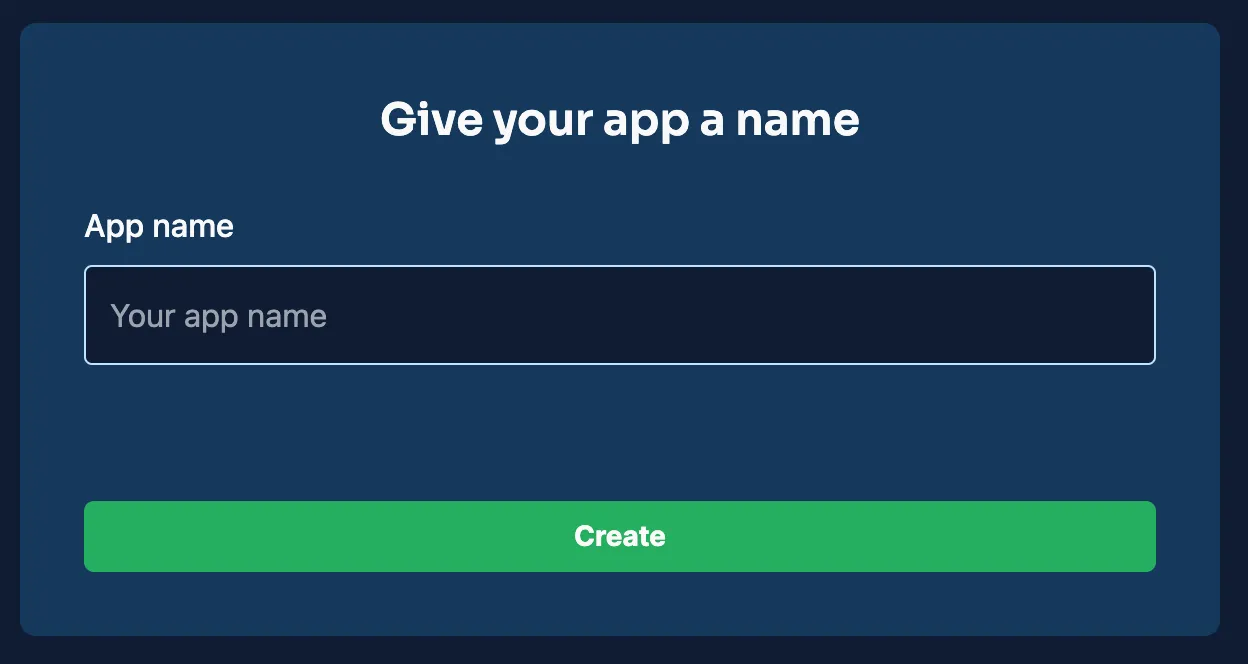
Once your project is ready, it will appear on your dashboard, providing the foundation for your backend.
For this CRUD application, you'll define several collections in Back4app. Below are examples of the main collections and fields that will support your CRUD functionalities.
This collection will store details about each item.
Field | Data Type | Description |
|---|---|---|
_id | ObjectId | Automatically generated unique identifier. |
title | String | The name or title of the item. |
description | String | A brief summary describing the item. |
createdAt | Date | Timestamp for when the item was added. |
updatedAt | Date | Timestamp for the last modification. |
This collection manages user credentials and authentication information.
Field | Data Type | Description |
|---|---|---|
_id | ObjectId | Auto-generated unique identifier. |
username | String | Unique username for the user. |
String | Unique email address of the user. | |
passwordHash | String | Hashed password for secure authentication. |
createdAt | Date | Timestamp for when the account was created. |
updatedAt | Date | Timestamp for when the account was updated. |
You can create these collections and add fields directly from the Back4app dashboard.
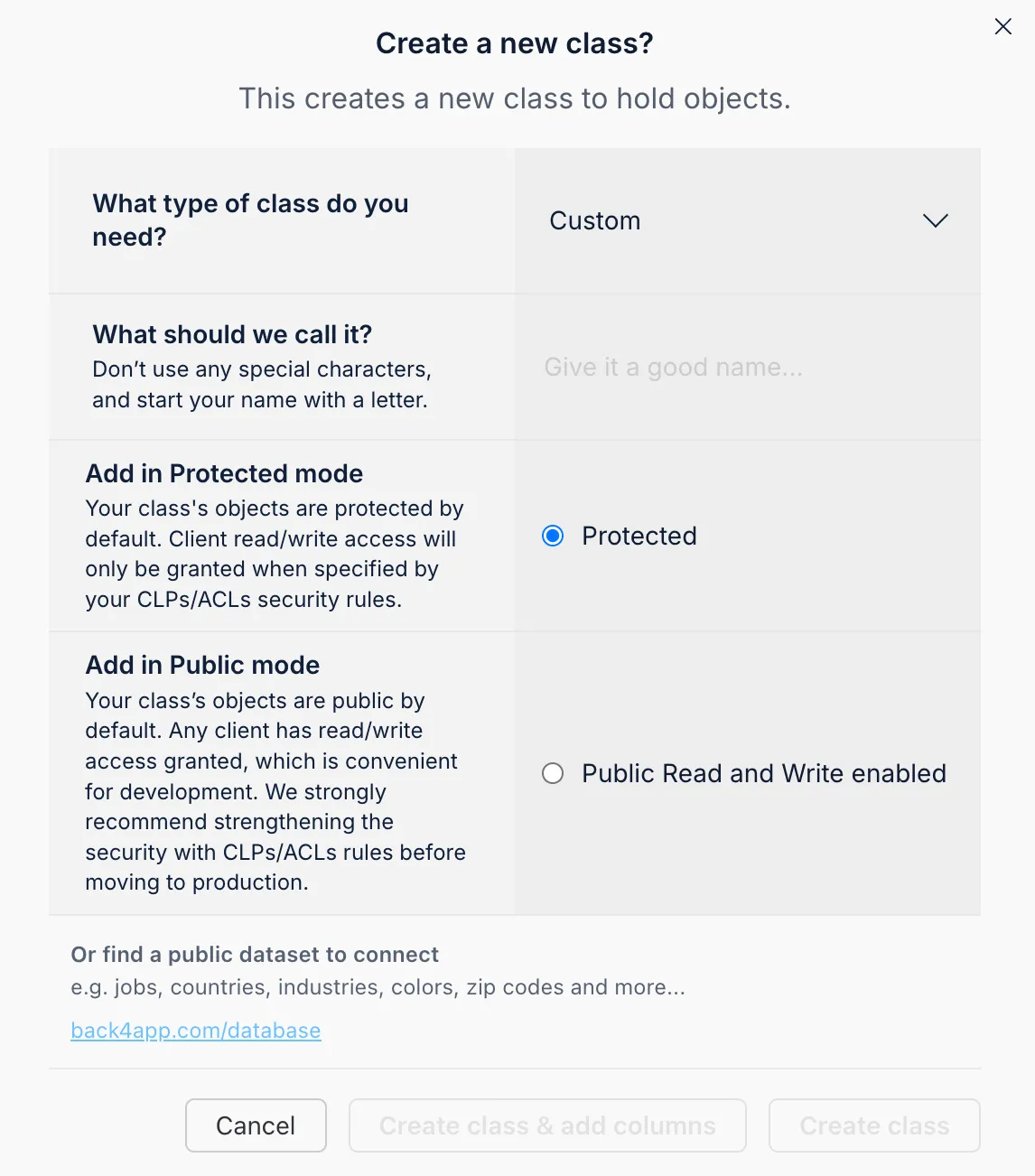
To add a new field, simply choose a data type, input the field name, and set default values or mandatory options as needed.
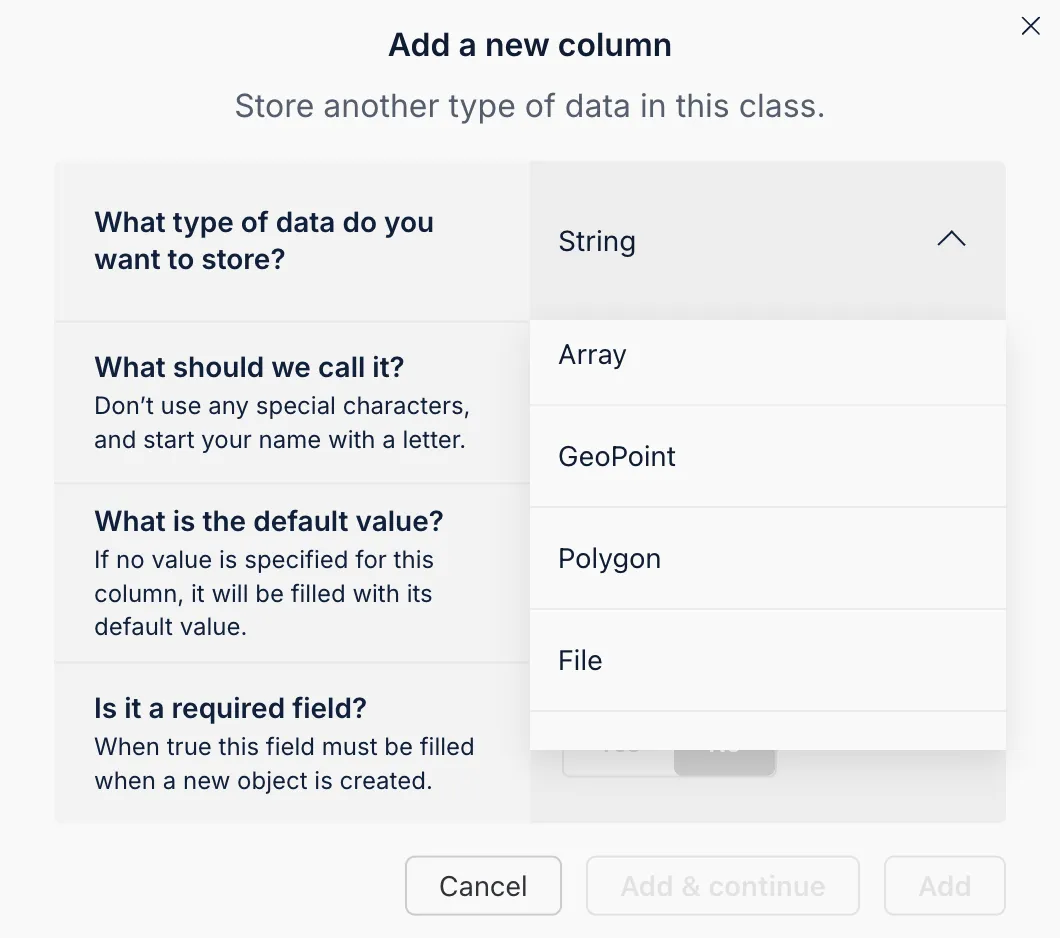
The AI Agent integrated into Back4app can auto-generate your schema based on your description, streamlining the initial setup.
- Access the AI Agent: Log into your Back4app dashboard and find the AI Agent in your project settings.
- Describe Your Data Model: Provide a detailed explanation of the collections and fields you need.
- Review and Confirm: The AI Agent will present a proposed schema. Verify the details and confirm the setup.
This AI-assisted method speeds up the process and ensures your schema is perfectly tailored to your app's needs.
The Back4app Admin App provides a no-code interface that simplifies backend data management. Its drag-and-drop features make CRUD operations—like adding, editing, and deleting records—more intuitive.
- Head over to the “More” menu in your Back4app dashboard.
- Select “Admin App” and click on “Enable Admin App.”
- Set up your admin account by entering your credentials. This will also configure roles (e.g., B4aAdminUser) and system classes.
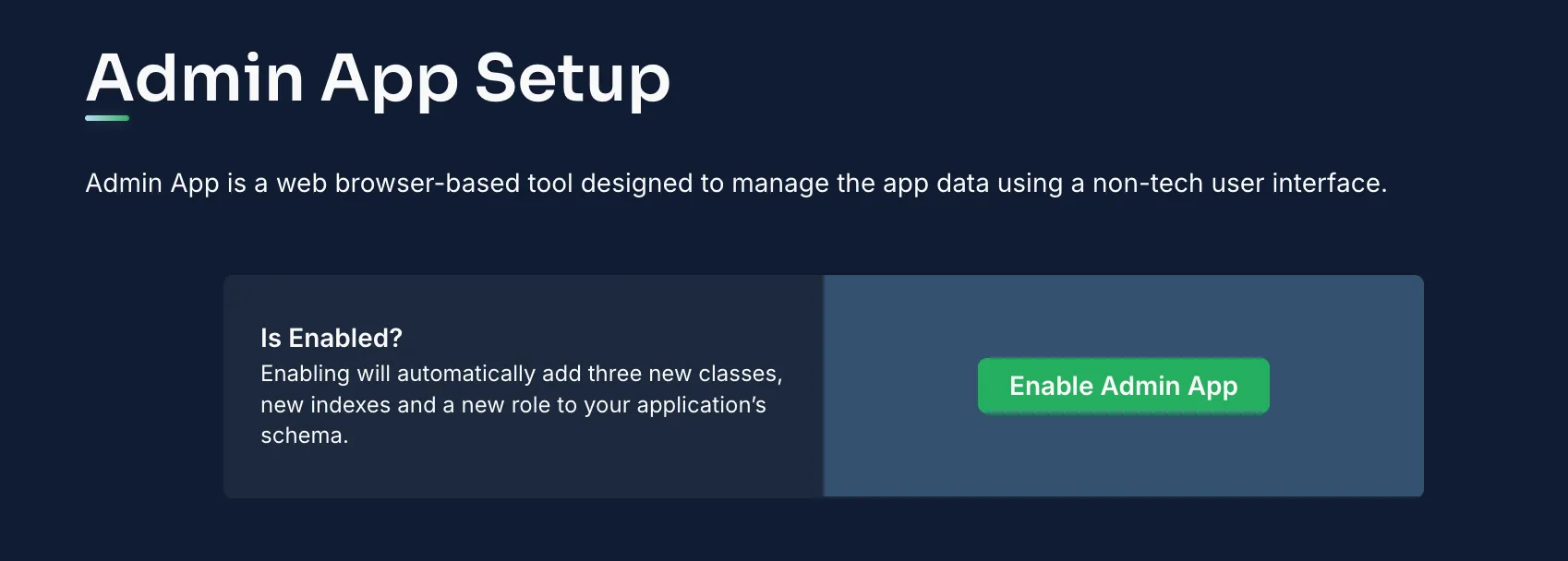
After activation, log into the Admin App to manage your data with ease.
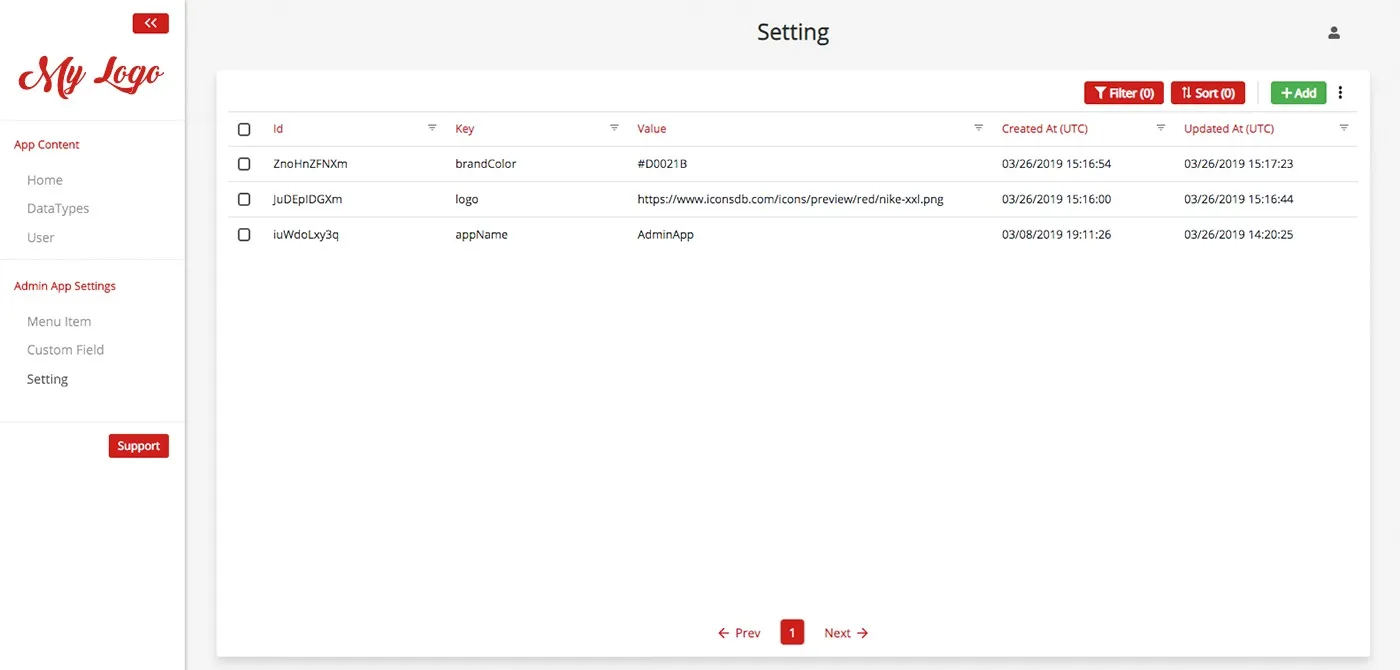
Inside the Admin App, you can:
- Insert New Records: Use the “Add Record” button within a collection (such as Items) to create new entries.
- Inspect and Modify Records: Click on any record to see its details and make edits.
- Delete Records: Remove any records that are no longer required.
This intuitive interface greatly enhances your data management experience.
Now that your backend is set up, it’s time to integrate your Remix JS app with Back4app.
Since the Parse SDK is not typically used with Remix JS, you'll perform CRUD operations via REST API requests.
If you haven’t already, create a new Remix project:
Follow the prompts to choose your deployment target.
Create API route files under the app/routes directory to handle CRUD operations. For example, you might have a file called items.server.js that includes functions for fetching, creating, updating, and deleting items.
Example: Fetching Items
Similarly, you can create POST, PUT, and DELETE routes to handle item creation, updates, and deletions.
In your Remix components, you can use hooks like useLoaderData to fetch data and fetch API or action functions to send data back to Back4app.
For example, in your React component:
Integrate similar API calls for update and delete operations in your Remix actions.
Strengthen data security by setting ACLs for your objects. For instance, to create an item that is accessible only by its creator:
Adjust CLPs in your Back4app dashboard to enforce default security policies, ensuring that only authenticated users can access specific collections.
Back4app utilizes Parse’s built-in User class for managing authentication. In your Remix application, handle user registration and login using API calls.
Example: User Registration Endpoint
Implement similar endpoints for login, session management, and password resets.
Back4app supports seamless deployment. You can deploy your Remix JS app using various strategies, including Docker.
- Compile and Bundle: Use your package manager and build scripts (e.g., via npm run build) to compile your app.
- Verify the Output: Ensure your build output contains all necessary files.
A typical Remix JS project may look like:
If you choose containerization, add a Dockerfile in your project’s root:
- Connect Your Repository: Host your Remix JS source code on GitHub.
- Configure Deployment: In your Back4app dashboard, select the Web Deployment feature, link your repository (e.g., Basic-CRUD-App-Remix), and choose the correct branch.
- Set Build and Output Commands: Specify your build command (like npm run build) and the output directory.
- Deploy Your App: Click Deploy and monitor the logs until your app is live.
Well done! You’ve now built a CRUD application using Remix JS integrated with Back4app.
In this guide, you set up a project called Basic-CRUD-App-Remix, defined collections for Items and Users, and managed data through the Back4app Admin App.
You then connected your Remix JS app to Back4app via REST API calls, and implemented secure user authentication and data protection measures.
Next Steps:
- Enhance Your Application: Consider adding more features like search functionality, detailed item views, or real-time updates.
- Expand Backend Capabilities: Look into cloud functions, external API integrations, or more advanced access control.
- Keep Learning: Visit the Back4app documentation and explore additional Remix JS tutorials to further optimize your app.
Happy coding and best wishes on your Remix JS journey!
